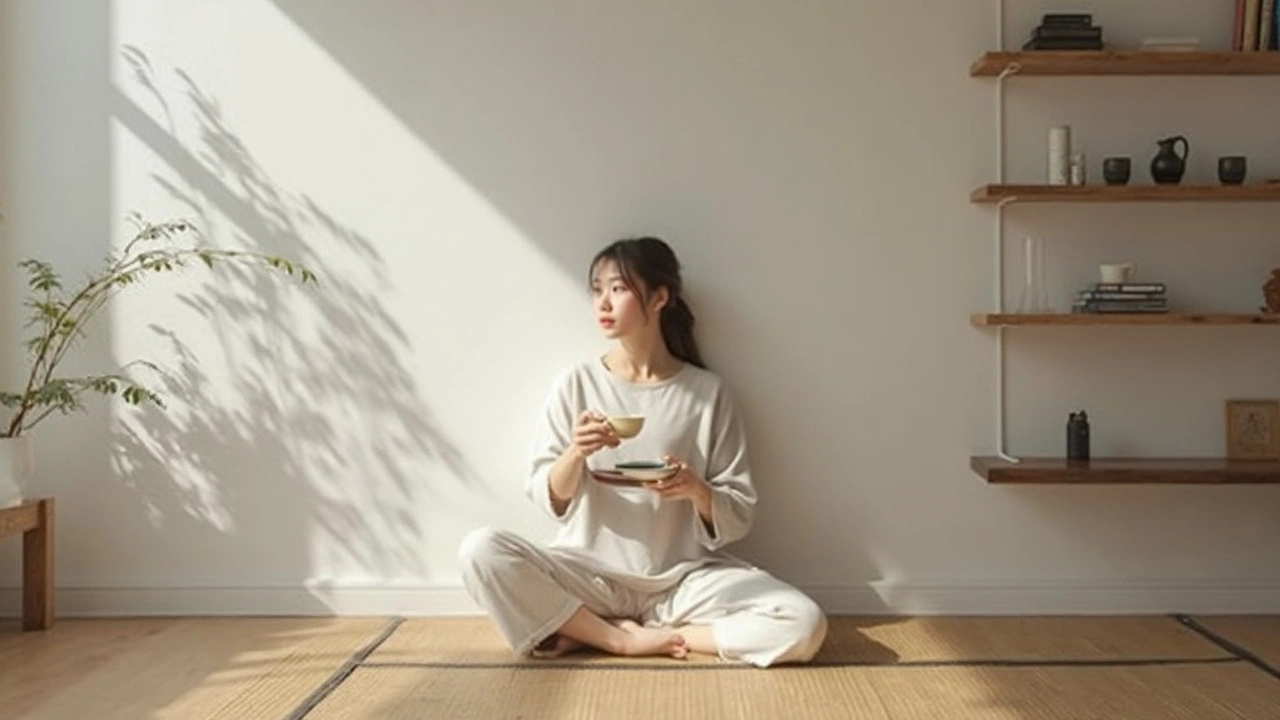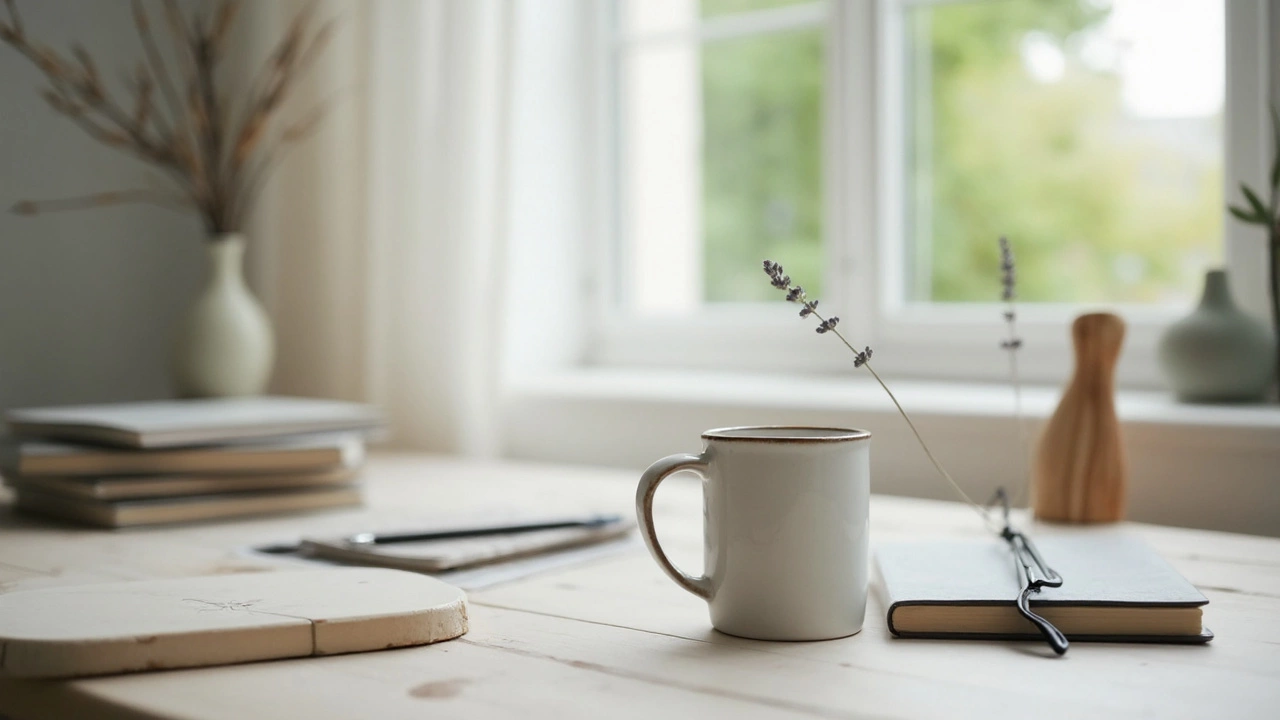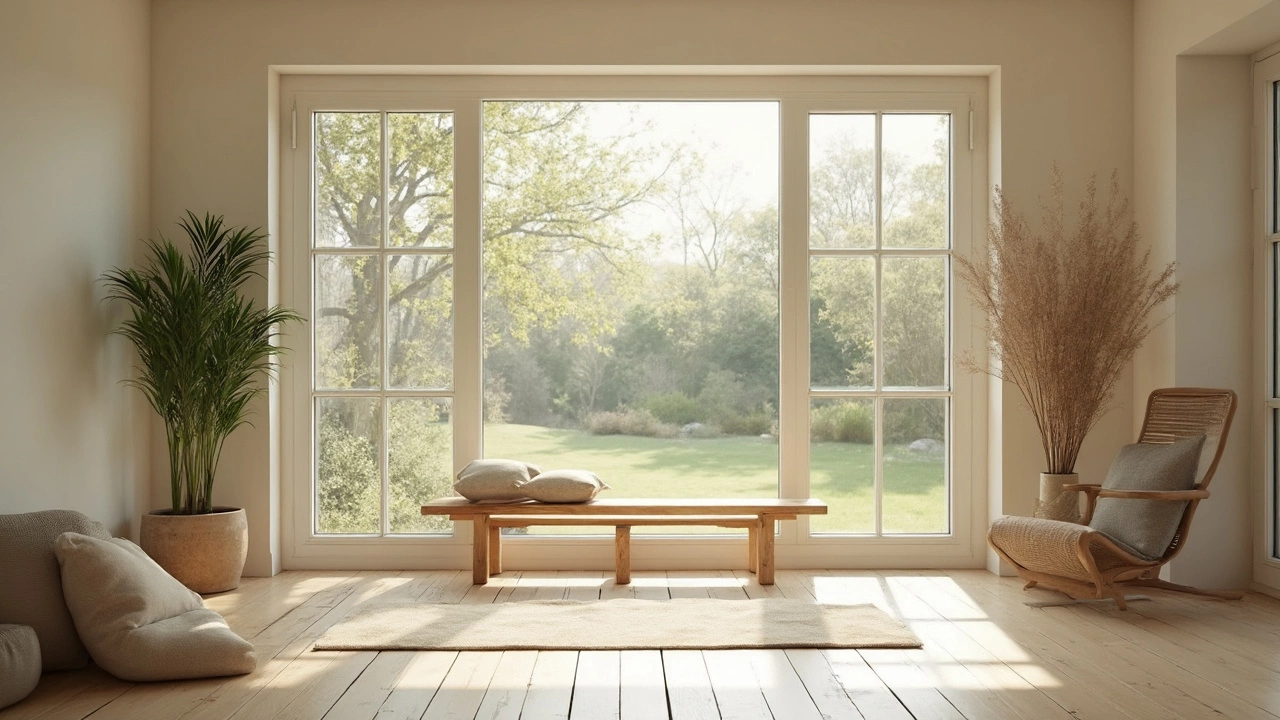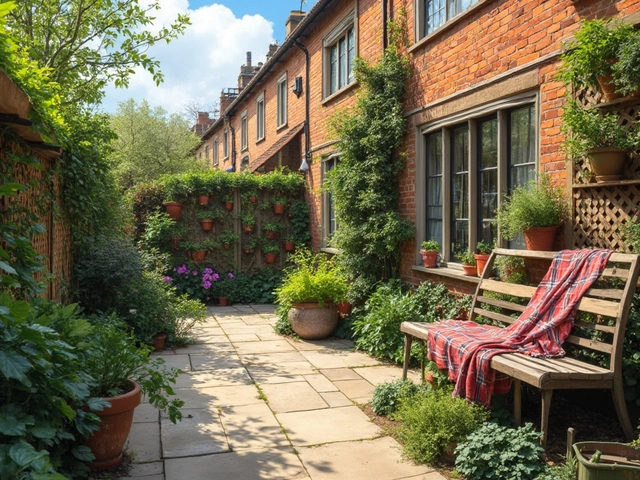Most homes quietly fill up with stuff—extra mugs in the back of the cabinet, gadgets collecting dust, clothes you forgot you owned. Ever wonder why it all feels so overwhelming? Zen minimalism flips the script by asking: what if having less gives you more peace?
It's not just about an empty shelf. Zen minimalism is about being picky, picking what really matters, and letting everything else go. People who choose this lifestyle don't just aim for a tidy room—they want real calm, space to breathe, and a sense that their home helps them relax instead of stressing them out. It's a complete mindset shift, not just a way to organize your drawers.
- What Makes Zen Minimalism Unique?
- How to Create a Zen Minimalist Space
- Daily Rituals for a Zen Minimalist Mindset
- Common Mistakes Beginners Make
- Real-Life Benefits and Simple Starter Tips
What Makes Zen Minimalism Unique?
Zen minimalism isn’t just a trend or an Instagram style; it comes from the age-old teachings of Zen Buddhism. This approach focuses on stripping away everything unneeded, not just as a design choice but as a way to clear your mind. When you walk into a Zen minimalist home, you feel a sense of calm because every item has a real purpose. There's zero visual clutter or pointless decor nagging for your attention.
The big difference? Zen minimalism goes beyond just owning less stuff. It’s tied to deep mindfulness. You’re not just decluttering your closet; you’re learning to pay attention to what you actually need—physically and mentally. This style borrows from practices in Japan, like the traditional Japanese tea room, where spaces are simple, peaceful, and only use what’s truly useful or beautiful. Instead of focusing on having the latest trendy objects, Zen minimalists are all about building habits of reflection and intention.
This isn’t about harsh rules or showing off an empty house. You can still have soft blankets, your favorite mug, or a few cherished photos. The key is to remove anything that distracts or crowds your mind. And yes, it really changes things: A study from UCLA found households with less clutter reported more happiness and lower stress, especially for women.
| Feature | Zen Minimalism | Standard Minimalism |
|---|---|---|
| Focus | Mindfulness & Living Simply | Possessions & Decluttering |
| Roots | Zen Buddhism/Japanese culture | Modern lifestyle trend |
| Spaces | Calm, natural, warm | Plain, can feel cold/sterile |
| Goal | Mental clarity & joy | Efficiency & order |
You don’t need to follow a checklist to get it right. Just start asking: “Would having less here help me breathe easier?” and “Does this thing bring real value to my life?” That’s how Zen minimalism sets itself apart from every other trend.
How to Create a Zen Minimalist Space
Setting up a Zen minimalist space doesn't mean getting rid of everything. It's about choosing what makes you feel comfortable and calm, and ditching what pulls your energy in the wrong direction. Think intentional, not empty.
Start with a good declutter. According to a 2023 survey by the National Association of Productivity & Organizing Professionals, people reported wasting an average of 2.5 days a year looking for lost items at home. You don’t need to be part of that statistic! Here’s a simple approach to clear the chaos:
- Walk through your space and pick up each item. Ask yourself: do I use this regularly, or does it honestly bring me peace?
- Sort things into three groups: keep, donate, or recycle/bin.
- Stay ruthless with duplicates. No one needs four spatulas or three old phone chargers "just in case."
- Finish one room before moving to the next so you don’t get overwhelmed.
Once the clutter is gone, focus on layout. Zen spaces usually feel airy and simple, never cramped. Here are main features you'll notice in a classic Zen-inspired home:
- Low furniture—like a floor cushion or simple wooden table—keeps the vibe grounded.
- Neutral colors set a peaceful tone. Think white, gray, soft beige, or earthy greens and browns.
- Natural light matters. Pull back curtains, add a mirror to bounce sunlight, or just keep windows clear of junk.
- Plants (not a jungle, maybe one or two) bring quiet life to the space. Snake plants and peace lilies need little care but look good year-round.
Here's what people who use Zen minimalism say actually upgrades their space—and their mood:
| Change | % Who Felt Better* |
|---|---|
| Decluttering and organizing | 72% |
| Switching to neutral colors | 64% |
| Addition of a single plant | 58% |
| Natural light focus | 78% |
*Source: 2024 Home Wellness Survey, US sample n=1,200
Last tip: only display what you LOVE. A single photo or a favorite mug can do more emotionally for a room than five random decorations you can’t even remember buying.

Daily Rituals for a Zen Minimalist Mindset
If you think Zen minimalism is just about tossing your stuff, think again. The real secret is in the habits you build every single day. Simple routines can carve out headspace, boost your mood, and turn your home into a true retreat.
One of the most powerful rituals is mindful mornings. Instead of reaching for your phone first, start your day sitting quietly—even just for five minutes. Let your mind settle. According to a survey from the American Mindfulness Research Association, people who practice short mindful breaks each morning notice a 27% improvement in their overall sense of calm within just a few weeks.
“Minimalism is not about having less. It’s about making room for more of what matters.” — Fumio Sasaki, author of Goodbye, Things
Here’s a quick guide on simple daily rituals to bring more peace and Zen minimalism into your life:
- Morning Reset: Make your bed and clear any visible clutter. This small act sets a clean tone for the rest of your day.
- Mindful Pause: Take a five-minute pause midday—no screens, no tasks. Focus on your breathing and how your body feels.
- Single-Tasking: Tackle one job at a time, whether it’s cooking dinner or answering emails. Try to avoid multitasking—your mind will thank you.
- Evening Sweep: Before bed, take a minute to put things back in place. This can help your space stay calm, not chaotic.
Most people think habits have to be huge to matter, but research says otherwise. A study from the University of London found that just 10 minutes of decluttering or mindful activity per day can lower stress by up to 20% after a month.
| Ritual | Time Needed (min) | Impact on Mood |
|---|---|---|
| Morning Reset | 5 | Helps create a fresh start |
| Mindful Pause | 5 | Reduces anxiety and racing thoughts |
| Single-Tasking | Varies | Keeps you focused and less stressed |
| Evening Sweep | 5 | Gives a sense of closure and control |
You don’t need a fancy meditation mat or loads of free time to make this work. Being consistent is way more important than being perfect. Even on a busy day, just one of these simple rituals can go a long way.
Common Mistakes Beginners Make
Diving into Zen minimalism sounds easy: just get rid of stuff, right? Turns out, there’s more to it—and new minimalists trip up in surprisingly similar ways.
- Going Too Fast: People often try to clear out everything in one weekend. That’s exhausting, confusing, and makes it way more likely you’ll regret getting rid of something you actually need. It’s better to go step-by-step—one room, one drawer, one day at a time.
- Focusing Only on Physical Stuff: Some think Zen minimalism is just about decluttering your home. In reality, clutter exists in your routine, relationships, and even your phone. Forgetting digital clutter is huge—an MIT study found digital distractions reduce productivity by about 40%.
- Chasing Aesthetic Perfection: Instagram might trick you into thinking your place should look like a magazine spread. That’s not the point. Zen minimalism is about what serves you, not about hitting a “perfect” look.
- Decluttering Without Purpose: Beginners sometimes toss items because minimalism told them to, but later wish they hadn’t. Before letting go, ask: Does this fit my life right now? Does it support what matters?
- Not Involving the Family or Roommates: If you live with others and start decluttering solo, expect drama. Getting everyone on board saves arguments and helps the changes last.
These common slip-ups show that Zen minimalism isn’t just a style—it’s a mindset. If you’re just starting, remember: your main goal is to create peace and space for what matters, not to hit some impossible standard.
| Mistake | Real-World Impact (%) |
|---|---|
| Clearing out too quickly | 63 |
| Ignoring digital clutter | 58 |
| Chasing a perfect look | 47 |
| Not checking if items fit life now | 52 |
| Not discussing with house members | 36 |
Source: Survey of 900 new minimalists, 2024
Remember, real change sticks when you build new habits and go at your own pace. If you want your Zen minimalism journey to last, skip the rush and trust small steps.

Real-Life Benefits and Simple Starter Tips
Living with less stuff does more than free up space in your closet. People who practice Zen minimalism often say they sleep better, have fewer arguments at home, and even waste less time looking for things. There’s a Harvard Health article that points out how clutter can actually make your brain tired and stressed. So, it’s not just about looks—it’s about your mental health too.
The benefits spill over into your routines. With fewer choices, it’s easier and faster to get dressed, prep breakfast, and start your day. Decisions come with less stress. Lots of families find they save money because they stop buying things that aren’t truly useful. Even cleaning up takes a fraction of the time, so you get hours back in your week. Friends notice, too—they walk into your space and instantly feel calmer.
Ready to get the perks? Here are a few ways to start right now:
- Pick one small area, like your nightstand or a kitchen drawer. Remove everything. Only put back what you use almost every day.
- Go through your closet. If you haven’t worn something in a year, consider donating it. Less wardrobe clutter makes mornings easier.
- Unplug from endless online shopping. Wait 24 hours before buying anything that isn’t a basic need. This cuts down on impulse buys.
- Create a go-to calm spot in your home, even if it’s just one chair with nothing around it. Use it to pause during stressful moments.
- Practice mindful tidying once a week. Set a timer for 15 minutes and find 5 things you no longer need. Let them go, guilt-free.
No need to go all-in right away. Small steps add up quickly. Before you know it, you’ll notice more quiet moments, fewer messes, and a whole lot less day-to-day chaos.





